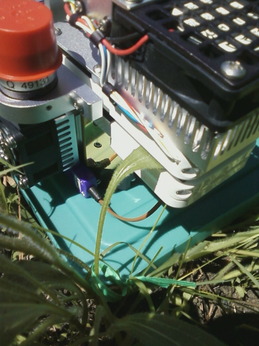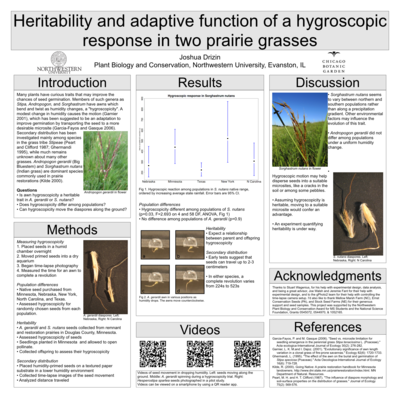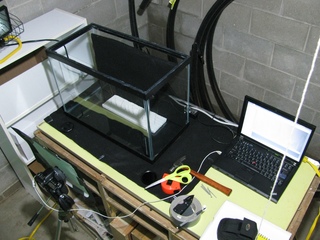Today the team accomplished a variety of projects. The morning began by searching for grasses in the common garden. A decent amount of grasses were located and the garden was resounding with choruses of “woots” shouted out when the grasses were located. The rest of the morning the team worked on individual projects. Throughout the day, Pam and I measured the Amax, transpiration, and conductance of echinacea plant leaves in the hybrid garden within the common garden. We managed to measure 42 plants before Helga (our fabulous machine) needed to take a rest and recharge until tomorrow. In the afternoon, more grasses searches were done. The team also ventured out to Hegg Lake to help Kory find echinacea plants about to flower in common garden 2 and to help Davis find flowering echinacea pallida plants. Overall the day was beautiful to be outside, and it was a very productive day! -Reina
|
||||
|
I defended my thesis on May 16th, presenting the results of my research on the hygroscopic motion of big bluestem and indian grass. I’ve attached the presentation to this post, though the presentation is a bit light on text. I’m putting together a section on my website with more text, which I’ll link when it’s ready. Attached is the “weather-tested” search protocol. While my partner found more than a dozen out of 75 or so, I found two out of 100. Maybe I am not the right person to write a protocol about finding these plants.?! It is very neat to think about these things being seedlings a year or two ago and now they are 20+ cm tall? plants that will produce seed…….sometime. This is the 3rd summer in a row that I have taken part of the Echinacea project! I teach 9-12 sciences (10th grade Biology)at Great Plains Lutheran High in Watertown, SD. Conducting summer research is the best way to incorporate real science into my classroom! While I was a pollen collector and image maker the first summer and a pollen crosser last summer; this summer I am going to collect insects that may or may not be moving pollen. Following the floral neighborhood study of 2009, I will collect and categorize insects from different sites to make an inventory of insect life. I hope it will shed some light on exactly which insects can be found and relate it to the diversity of the plants at sites. It will also be a useful collection for my students in the future. I’ve been working with the Stipa germination data we collected from the common garden over the summer for Stuart’s R class and, among other things, have come up with a little plot of the common garden. Filled-in blue circles are where we found Stipa alive, empty circles had no seedlings. A neat thing would be some kind of heat map for longest leaf or number of leaves, but I’ll try that later. Tag #1028 was just found in the ground near the SW corner of Hjelm house porch. 2010 Stipa Draft Protocol.pdf. The Google Docs wasn’t really working out… Comment with your thoughts and changes. Check it out on youtube. It’s even available in full HD! I’m actually just linking this because this blog isn’t wide enough to fit the whole movie. So I think I have my basic setup for the time-lapse photography for checking out those stipa awns. Using one of Greg’s aquariums, a camera, tripod, computer and such. I’ll be able to change the humidity soon enough and really start the experiment. Some of the stipa, just as a test And here’s my setup. Off to the left of the aquarium is the 500W halogen light. The seeds and black felt are inside the aquarium. In front of that is the camera with a blind on the front to help knock down some glare from the front glass. Attached is the computer, which is what I’m using to control the time-lapse. |
||||
|
© 2024 The Echinacea Project - All Rights Reserved - Log in Powered by WordPress & Atahualpa |
||||






